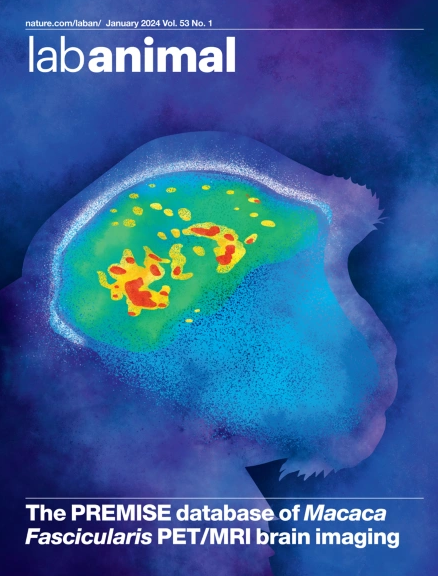Impact of obesity on infarct size, circulating biomarkers, mitochondrial function and mortality in a Göttingen minipig myocardial infarct model
IF 5.9
3区 农林科学
Q1 VETERINARY SCIENCES
引用次数: 0
Abstract
Obesity is a risk factor for the development of coronary artery disease and myocardial infarction (MI). However, most large animal studies of MI are performed in lean animals. Here we assessed the impact of obesity on echocardiographic findings, infarct size, circulating biomarkers, mitochondrial respiratory capacity and mortality in a closed-chest minipig model of MI. The initial study population consisted of 20 obese (median 60.0 kg [interquartile range 55.9–64.6 kg]) and 18 lean (25.0 kg [23.4–36.5 kg]) female Göttingen minipigs. The duration of obesity induction using a western-style diet was up to approximately 6 months (156 days [24–162 days]) before the induction of MI. The induction of MI by 120-min balloon occlusion of the left anterior descending coronary artery was feasible in 17 lean and 17 obese animals. Mortality was higher in obese compared with lean animals (53% versus 12%), driven primarily by refractory ventricular fibrillation during occlusion. Electrocardiographic findings showed longer QRS and QT intervals and more extensive ST-segment elevation in obese animals compared with lean animals during occlusion. Plasma concentrations of pro-atrial natriuretic peptide, pro-C-type natriuretic peptide and cardiac troponin T were significantly lower in obese compared with lean animals. Infarct size estimated 8 weeks after MI was significantly smaller in obese (10% [9–11%]) compared with lean animals (13% [13–15%]). Finally, mitochondrial-complex-I-linked respiratory capacity was overall significantly higher in obese animals; however, no group difference was found in intrinsic mitochondrial respiratory capacity. The study shows that, compared with lean animals, obesity significantly impacts echocardiographic findings, infarct size, circulating biomarkers, mitochondrial respiratory capacity and mortality in a minipig model of myocardial infarction.


肥胖对Göttingen迷你猪心肌梗死模型中梗死面积、循环生物标志物、线粒体功能和死亡率的影响
肥胖是冠状动脉疾病和心肌梗死(MI)发展的危险因素。然而,大多数心肌梗死的大型动物研究都是在瘦弱动物身上进行的。在这里,我们评估了肥胖对闭胸迷你猪心肌梗死模型超声心动图表现、梗死面积、循环生物标志物、线粒体呼吸能力和死亡率的影响。最初的研究群体包括20只肥胖(中位数60.0 kg[四分位数范围55.9-64.6 kg])和18只瘦瘦(25.0 kg [23.4-36.5 kg])雌性Göttingen迷你猪。西式饮食诱导肥胖的持续时间在心肌梗死发生前约6个月(156天[24-162天])。17只瘦鼠和17只肥胖鼠采用球囊阻断左冠状动脉前降支120分钟诱导心肌梗死是可行的。肥胖动物的死亡率高于瘦弱动物(53%对12%),主要是由闭塞期间难治性心室颤动引起的。心电图结果显示,与瘦动物相比,肥胖动物在闭塞期间QRS和QT间期更长,st段抬高更广泛。肥胖动物血浆中心房利钠肽、前c型利钠肽和心肌肌钙蛋白T的浓度明显低于瘦肉动物。心肌梗死后8周,肥胖动物的梗死面积(10%[9-11%])明显小于瘦弱动物(13%[13-15%])。最后,肥胖动物的线粒体复合体i相关呼吸能力总体上显著更高;然而,线粒体内在呼吸能力没有发现组间差异。
本文章由计算机程序翻译,如有差异,请以英文原文为准。
求助全文
约1分钟内获得全文
求助全文
来源期刊

Lab Animal
农林科学-兽医学
CiteScore
0.60
自引率
2.90%
发文量
181
审稿时长
>36 weeks
期刊介绍:
LabAnimal is a Nature Research journal dedicated to in vivo science and technology that improves our basic understanding and use of model organisms of human health and disease. In addition to basic research, methods and technologies, LabAnimal also covers important news, business and regulatory matters that impact the development and application of model organisms for preclinical research.
LabAnimal's focus is on innovative in vivo methods, research and technology covering a wide range of model organisms. Our broad scope ensures that the work we publish reaches the widest possible audience. LabAnimal provides a rigorous and fair peer review of manuscripts, high standards for copyediting and production, and efficient publication.
 求助内容:
求助内容: 应助结果提醒方式:
应助结果提醒方式:


